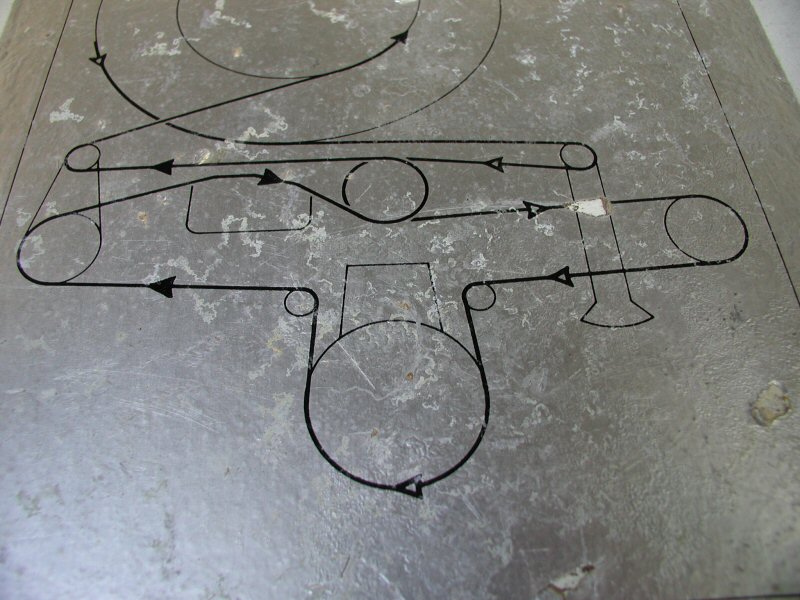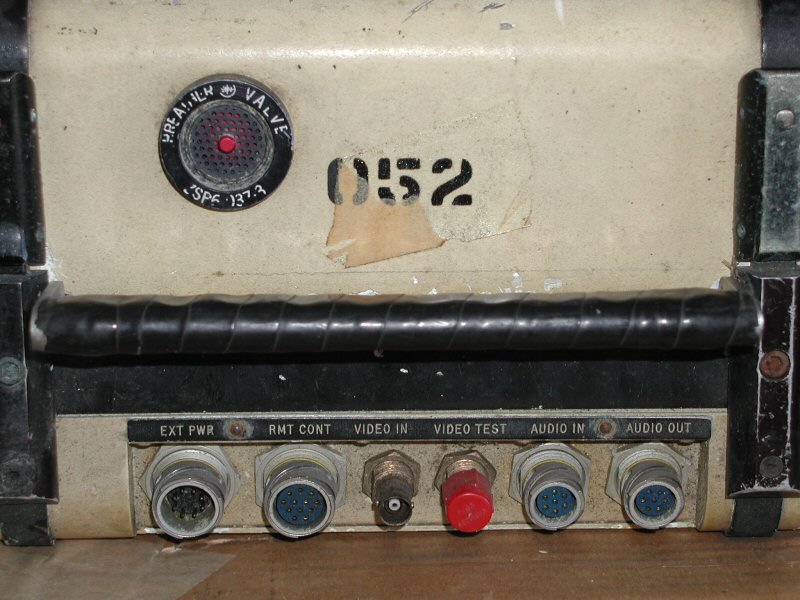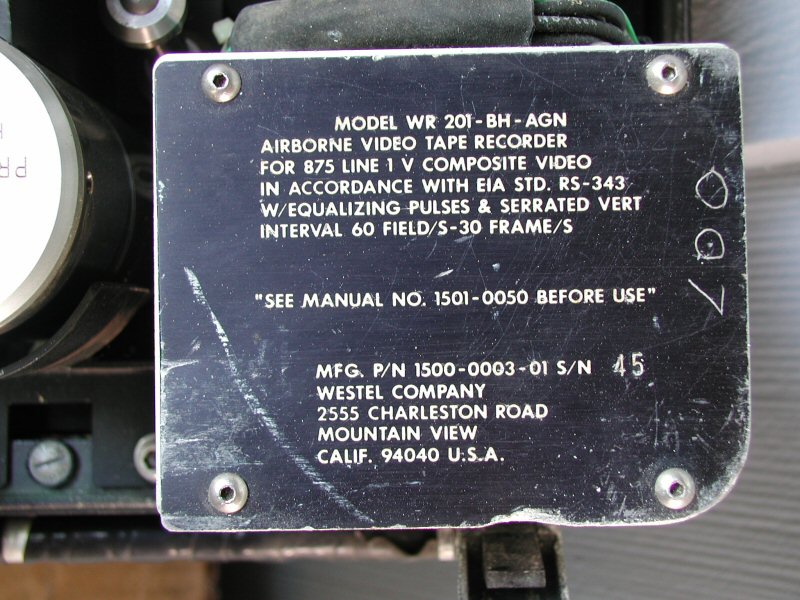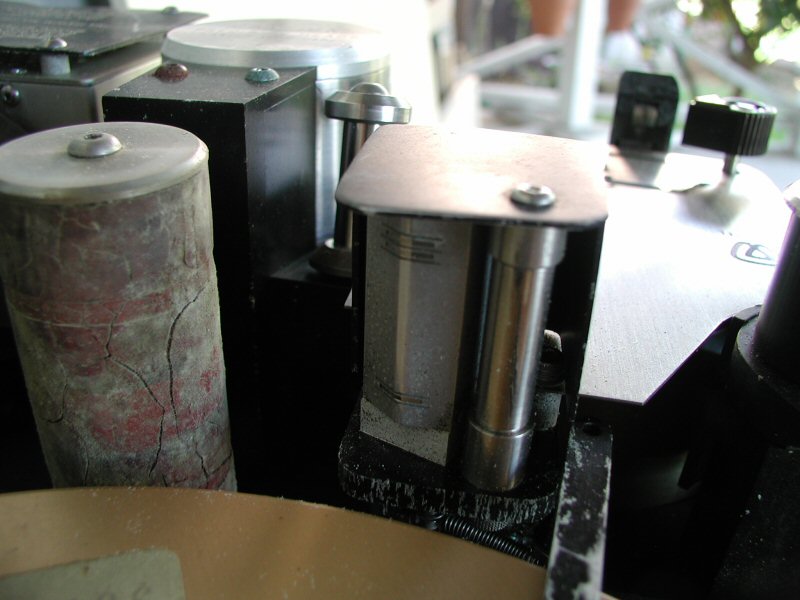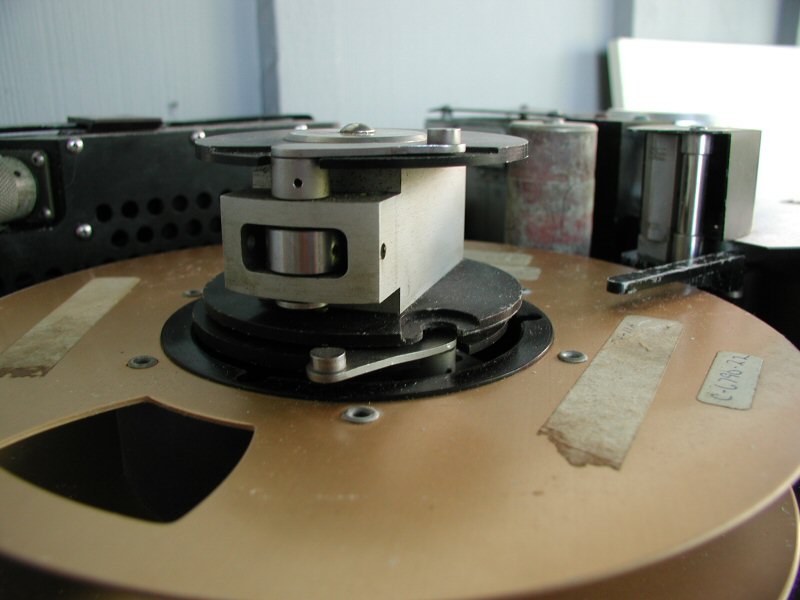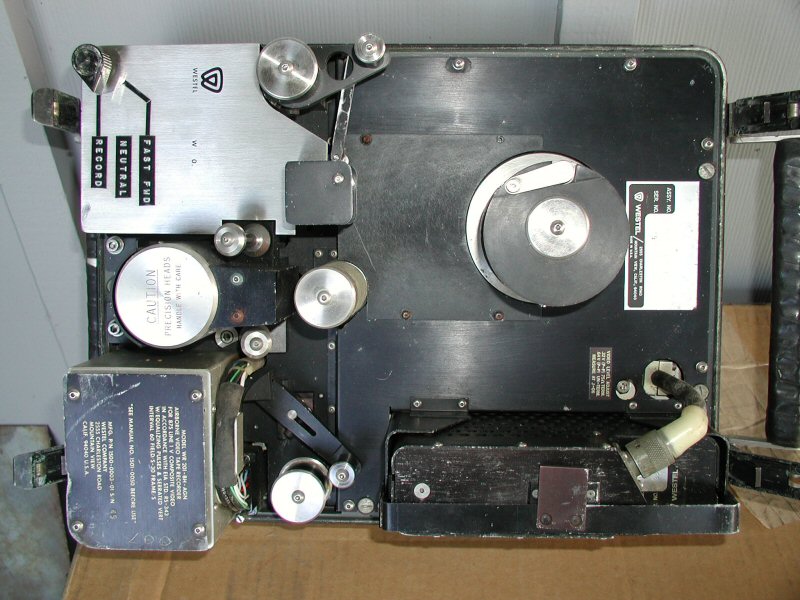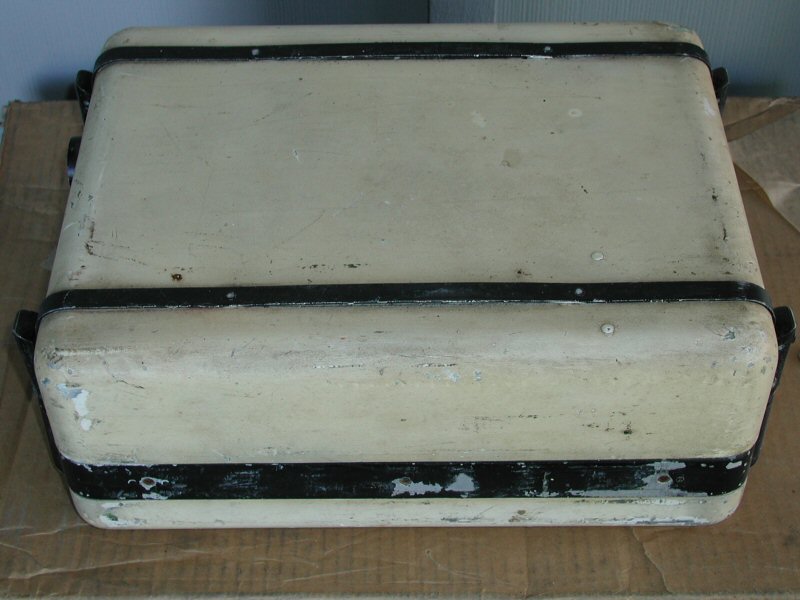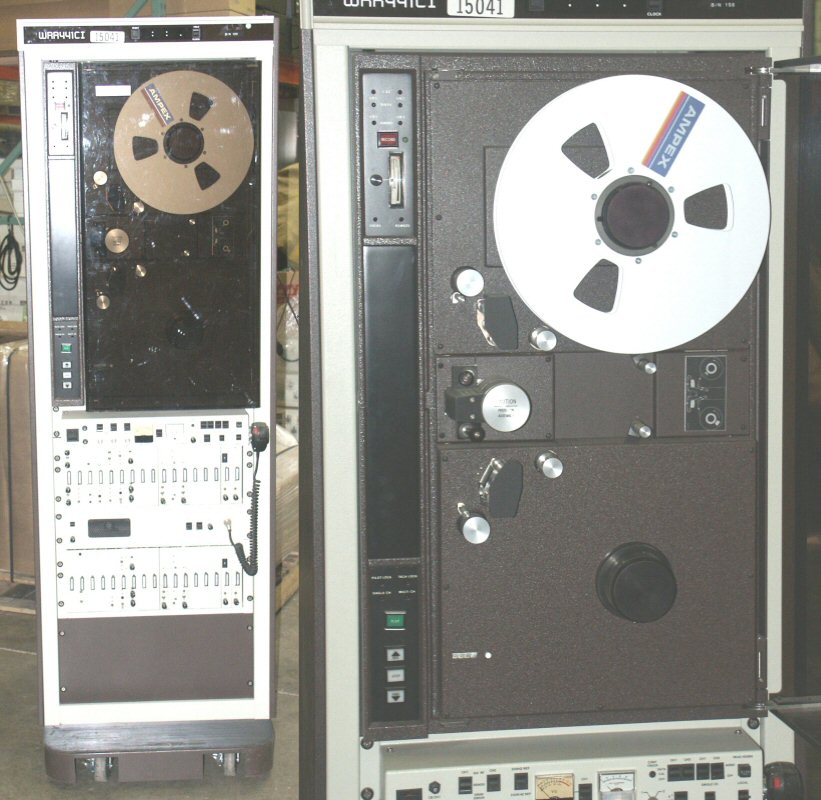| LabGuy's World: Westel WR-201
Coniscan Format Airborne Video Tape Recorder New! 060810 Here is a rare oddity. This is a record only video recorder used for airborne military operations. This function is usually referred to as a gun camera, as it recorded the image of the targets chosen by the pilot. This machine is late 1960s technology as far as I can determine via quick examination. I have another recorder, obviously related to this one, a [Precision Echo model 521]. I have very little information on the Westel Company and no information on this deck aside from what is printed on it. The only other info I have, shown in my Catalog Pages, is for a man carried portable recorder by the Westel company of Mountain View California, dated July 1966. In the photos we see the threading diagram. What a complex little sucker to load! In fact, there is a metal shield in front of the scanner, not shown, that has tape oxide on it where someone missed looping the tape on the head and got it around this shield instead. The large rotten looking cylinder in some of the pictures is the capstan. The rubber is literally rotting off of it. There appears to be no erase head, so it was likely necessary to load the machine with fresh blank tape or bulk erased tape before using it. It also has no rewind function. Only fast forward, reminiscent of film loading methodology. The reels are held in place by some very fancy cam locking mechanisms on the coaxially stacked hubs. The machine is in sad shape. Not likely to ever be restored, pointless without a player anyway, but it displays nicely. The tag on the machine describes it as follows: Airborne video tape recorder for 875 line 1 volt video in accordance with EIA STD. RS-343 with equalizing pulses and serrated vertical sync interval 60 fields / 30 frames / second. That is pretty detailed information... as far as it goes. The tag also reads: See manual 1501-0050 before use. If you have a copy of this manual, feel free to drop me a line! For a one inch VTR, it is very light, weighing in at only 34 pounds. The unit, with the covers on it, is a very compact 15 inches by 12 inches by 6.5 inches. It takes 8.5 inch diameter, standard NAB hub reels of one inch videotape. If my sketchy data is accurate, the machine runs at 10 ips and records 30 minutes of video. (Correct me if this wrong) Precision Echo Model WR-441 Video Tape Recorder Above is an example of the type of deck that might play the tapes made by the WR-201. It is the Precision Echo WR-441. Note the similarity in model numbers, yet the difference in the manufacturers name. The pictured unit turned up on Ebay some time in the past. I obviously wanted this machine, but just as obviously, it is just a smidge bigger than a bread box! The head scanner is identical to the one on the airborne VTR. I had a few of the vide head scanners (only) that match the scanner on this unit perfectly. The scanners that I had were branded "Echo Science", but were otherwise identical. I have since sold them. On [Tim Stoffel's Quadruplex Park site], [video formats page] is the following description of Coniscan format: This is a special VTR that was developed for the military. It was
used to record 'Gun Camera' footage in various aircraft. To withstand
the high G forces encounteres in such aircraft, it employed a small
scanner (about the size of type 1" B) and high rotational speeds. The
24 hz frame rate was chosen to make it compatible with film. To
compensate for the low frame rate, the line count was increased to 655
lines (H rate somewhere around 15,720 Hz). Besides the miltary, some
filmmakers used this format. The main use was special effects ('2001 -
A Space Oddssey' had effects done in this format), but at least one
feature film ('Tootsie'?) was apparently shot in this format. Before
my collecting days, I had a chance to own one of these VTR's and passed
it by! I now deeply regret it. Later on, a 655/24 adaption was made of
the 3/4" U-matic format. Read more about it on the U-matic entry.
Westel also developed an NTSC version of the machine for broadcast use,
but was never sucessful in marketing it. One of the people working
for Westel was quad pioneer Alex Maxey.
I believe that some of the information above is incorrect. My WR-201 is clearly marked as operating at 875 line / 30 frame rate. That is not to say there were other scan rates, but I don't know how common that may have been. Any contributions of accurate information on this topic will be greatly appreciated. I have also seen the brands Arvin Echo and Precision Echo. I believe these to be collaborative products, produced under government contract. Combining the products and skills of the appropriate companies, produced the product required by the need of the day. Precision corp. produced video recorders and Arvin Echo produced a still frame video recorder that used a super sized floppy disc. Any information on any of these companies or combinations of companies would be greatly appreciated. NEEDED: Service manual and or Operators manual and or any other literature about this product. Also need a compatible tape player. :-) [HOME]......[VIDEO RECORDERS MUSEUM] Created August 10, 2006 Last updated: August 12,2006 |

